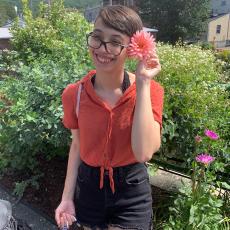
My project this summer was developing a system for studying beneficial plant-microbe interactions. Plant-microbial interactions have a significant impact on plant health and growth, and better understanding these systems could lead to new ways to improve the yield and resilience of agricultural crops. However, they are difficult to study because of the inherent complexity of both soil structure and soil microbial communities; thus, there is a demand for a standardized system to study complex soil microbiomes in a reproducible fashion. The system I developed this summer is composed of two parts. Firstly, natural soils are complex and dynamic, and it is therefore difficult to reproduce results from experiments using natural soils. To solve this problem, my system uses a simple model soil made of sand and two types of clay. The second component is the container, which we have dubbed the minirhizotron, composed of a 3D printed spacer holding two double-wide microscope slides. The microscope slides allow roots to be visualized, either under a microscope or with the naked eye.
In this system, we ran a simple preliminary experiment to determine the ideal type of organic matter to add to model soil. We grew the model grass Brachypodium distachyon in our system with five different types of organic matter, then performed destructive harvests and measured different plant phenotypic characteristics. We also measured respiration from the soil post-harvest as an indicator of microbial activity. In our minirhizotrons, B. distachyon grew successfully to flowering. Surprisingly, we found that red maple leaf litter caused significant inhibition of plant growth, as indicated by reduced total dry weight, leaf area, and specific leaf area. Microbial respiration was significantly higher in model soil containing ground sorghum, red oak, and red maple. From these results, we conclude that either ground sorghum or red oak leaf litter should be added to model soil systems to optimize both plant and microbial growth.
